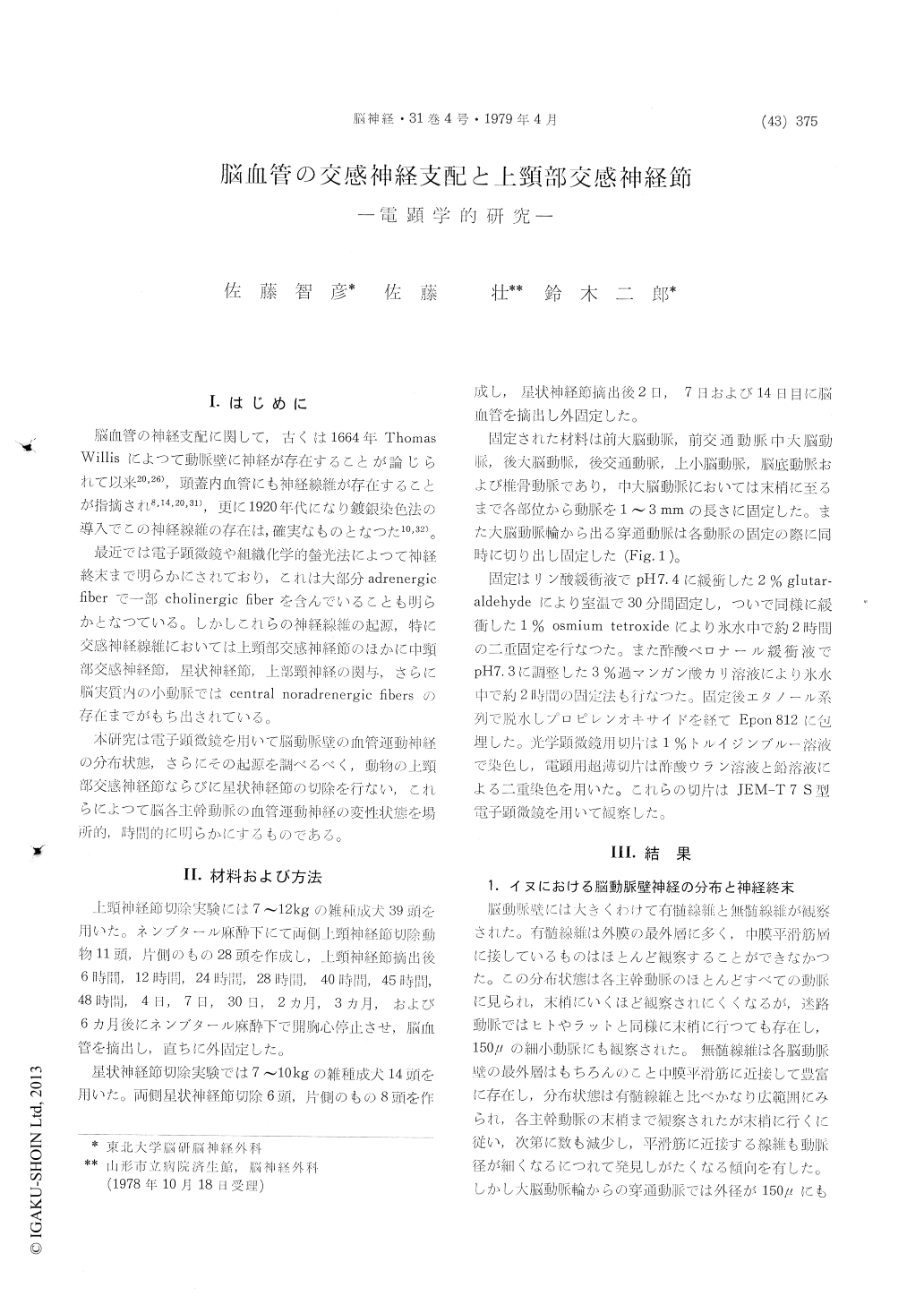Japanese
English
- 有料閲覧
- Abstract 文献概要
- 1ページ目 Look Inside
I.はじめに
脳血管の神経支配に関して,古くは1664年ThomasWillisによつて動脈壁に神経が存在することが論じられて以来20,26),頭蓋内血管にも神経線維が存在することが指摘され8,14,20,31),更に1920年代になり鍍銀染色法の導入でこの神経線維の存在は,確実なものとなつた10,32)。
最近では電子顕微鏡や組織学的螢光法によつて神経終末まで明らかにされており,これは大部分adrenergicfiberで一部cholinergic fiberを含んでいることも明らかとなつている。しかしこれらの神経線維の起源,特に交感神経線維においては上頸部交感神経節のほかに中頸部交感神経節,星状神経節,上部頸神経の関与,さらに脳実質内の小動脈ではcentral noradrenergic fibersの存在までがもち出されている。
The nerve fibers in cerebral arterial walls in dogs were abundantly distributed in each main artery consisting of the vessels of the circle of Willis, the basilar artery, and the perforating artery running to basal ganglia and the thalamus. These nerve fibers are all found in the adventitia and form a neuromuscular contact without entering into the medial smooth muscle at the nerve terminal, possessing the adrenergic and cholinergic axons in the same Schwann cell.
When the superior cervical ganglion was resectedin dogs, nerve degeneration in arterial walls began after about 28 hours and marked degenerative substance was showed after 40-48 hours ; after four days the small cored vesicles of adrenergic axons disappeared. The same condition was seen after three months, but after six months the small cored vesicles were again visible. When the middle cerebral artery was examined by separating it into the perforating artery near to the internal carotid artery and the peripheral portion of the middle cerebral artery. Degeneration of the nerve fibers of the arterial walls occurred earlier the more proximal their portion.
The distribution of adrenergic nerve fibers from the superior cervical ganglion is bilateral in the anterior cerebral artery from the anterior com-municating artery to the peripheral region, basilar artery, and vertebral artery, but ipsilateral only in the anterior cerebral artery as far as the anterior communicate artery, middle cerebral artery, pos-terior communicating artery, posterior cerebral artery and superior cerebellar artery.
Degeneration of nerve fibers of the walls of these cerebral arteries was not seen ever after stellate ganglionectomy in both sides.
From the above electron microscopical obser-vations, it is apparent that the motor nerves of cerebral vessel walls are distributed from the superior cervical ganglion by way of the internal carotid artery. Futhermore, it is considered that the experimental studies seem to justify the utility of superior cervical ganglionectomy which we have been treated for the vasospasm occurred after the rupturing of intracerebral aneurysm.

Copyright © 1979, Igaku-Shoin Ltd. All rights reserved.


